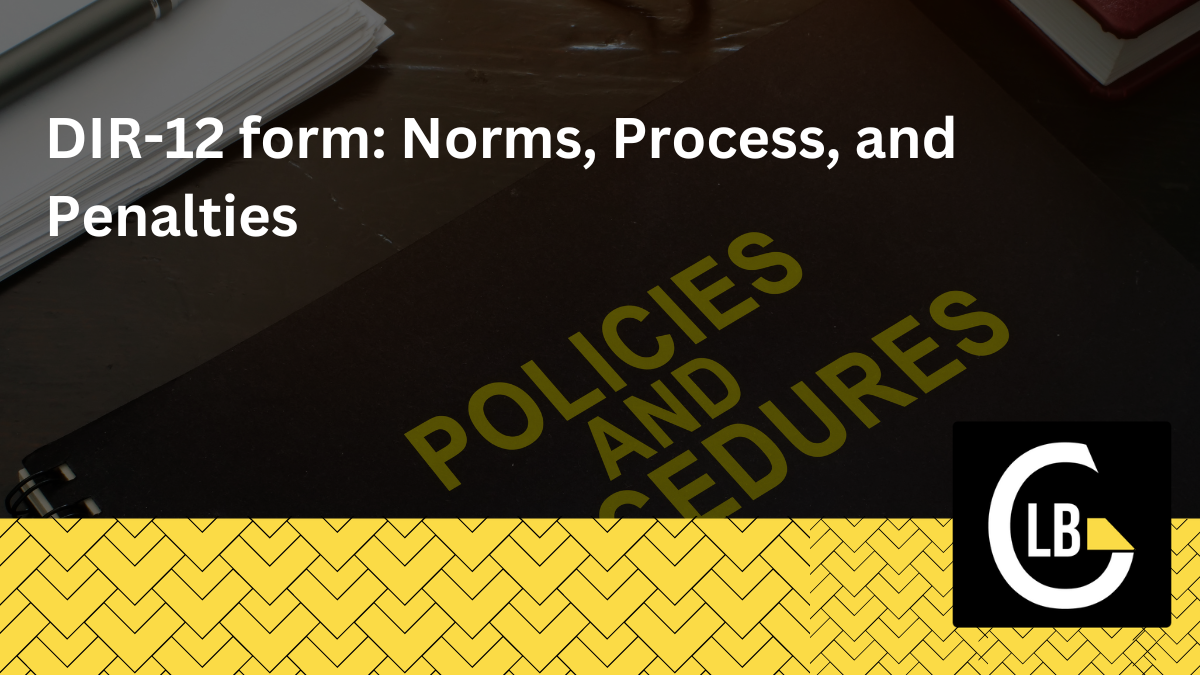If you’re managing a business in India, you’re probably familiar with the compliance requirements and forms that need to be submitted to the Ministry of Corporate Affairs (MCA). One key form you might encounter is DIR-12. This form is essential for informing the government about any updates regarding the directors of your company. Let’s go over what the DIR-12 form is, the steps to file it, and what happens if you miss the deadlines.
What Is DIR-12?
DIR-12 is a form that companies use to inform the MCA of any changes related to their directors. This includes hiring a new director, a director resigning, or even changes in a director’s position or role. Filing this form ensures that the official records with the government are up-to-date.
When Should You File DIR-12?
You must file DIR-12 within 30 days of any changes concerning your directors. Here’s when you’ll need to file it:
- Appointing a new director.
- Resignation of an existing director.
- Removal of a director.
- Changing the role of a director (for example, promoting them to managing director).
- Reporting the death of a director.
If you miss the deadline, you could face penalties, but we’ll cover that later.
Procedure for Filing DIR-12
Filing the DIR-12 form is straightforward if you follow these steps:
1. Prepare the Required Documents
To submit DIR-12, you’ll need to have the following documents ready:
- A resolution passed by the board for the appointment, removal, or resignation of a director.
- A consent form (Form DIR-2) if you’re appointing a new director.
- A resignation letter from the departing director (if applicable).
- Proof of the removal of the director, if that’s the case.
2. Login to the MCA Portal
Visit the MCA website and log in with your credentials. If you don’t have an account, you’ll need to create one.
3. Download and Fill Out DIR-12
Once you’ve logged in, download the DIR-12 form. Fill in all the necessary details, including the Corporate Identification Number (CIN) of your company, the details of the directors, and the reasons for the changes.
4. Attach the Necessary Documents
Upload the documents you’ve prepared in Step 1. Review everything to make sure the details are correct.
5. Sign the Form Using DSC
Before submitting, the form needs to be signed with a Digital Signature Certificate (DSC), usually by a director or the company secretary.
6. Submit the Form and Pay the Fee
After completing everything, submit the form online and pay the required filing fee. Once submitted, you will receive an acknowledgment, confirming that your form has been successfully filed.
What Happens If You Miss the Deadline?
Not filing DIR-12 within 30 days can lead to penalties. Here’s what you might face:
- Late Fees: The longer the delay, the higher the fee. Here’s how it works:
- If you’re late by 1 to 30 days, the filing fee doubles.
- If you’re more than 30 days late, you could end up paying 12 times the regular fee.
- Directors Can Be Held Liable: Failure to file on time could make directors personally liable, and the company might have to pay a fine of up to ₹50,000, plus ₹500 per day for continuing delays.
- Risk of Company Strike Off: If non-compliance continues, the MCA could strike off your company’s name from their records, which could mean the end of your company’s legal existence.
Why Filing DIR-12 Matters
Filing the DIR12 form is about more than just ticking off a regulatory box. It ensures that the government has up-to-date information about your company’s leadership. This helps avoid unnecessary penalties and ensures that your business stays in good legal standing.
Key Takeaways:
- Submit on Time: File DIR-12 within 30 days of any director changes.
- Have Documents Ready: Keep resolutions, consent letters, or resignation letters handy.
- Use a Digital Signature: You’ll need a DSC to submit the form.
- Avoid Penalties: Missing the deadline can result in significant fines, so don’t delay.
Staying on top of compliance requirements like DIR-12 filing is essential. It’s a simple task that can prevent bigger issues down the road
